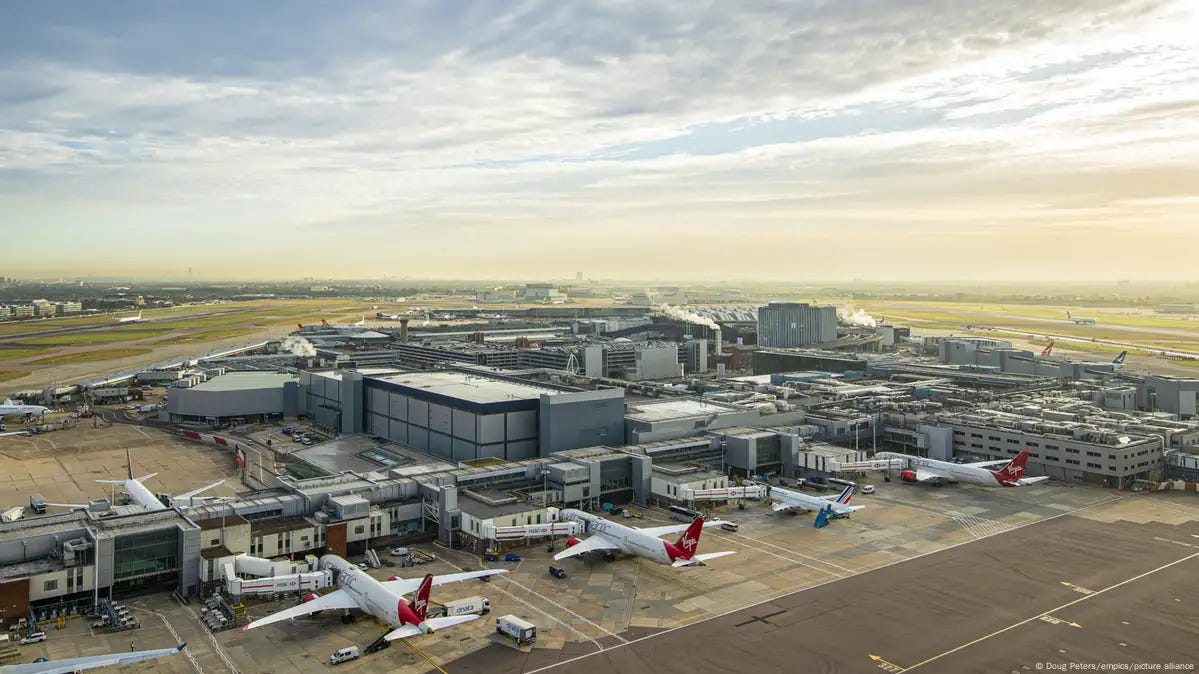"Heathrow’s Wild Ride: From a Tent to £17B – You’ll Wish You Knew This Sooner!"
"How Heathrow Took Off: A Muddy Tent Turned Global Titan!"
Dear Aspiring Entrepreneur,
Welcome to Home School of Business!
We’re here to empower you with the knowledge, strategies, and connections to build a thriving business.
Our Mission: To decode the strategies behind successful businesses, iconic brands, and visionary solutions.
Featured Industry Content:
Automobiles | Technology | Real Estate & Hospitality | Food & Beverage
Manufacturing & Industrial | Retail & E-Commerce
Explore the Home School of Business Website for 100+ Case Studies
Introduction
What turns a humble airfield into a global travel titan? London Heathrow’s story is a whirlwind of ambition, engineering, and jet-fueled dreams. From a sleepy runway in 1946 to the world’s busiest international hub, it’s moved millions and reshaped how we soar. It’s not just about flights—it’s a brand built on scale, precision, and a passport to everywhere. Fasten your seatbelt for Heathrow’s high-flying journey and a glimpse at its next departure!
The Brand Snapshot
London Heathrow, the crown jewel of the UK’s aviation network, is a gateway to the skies. Handling 80M+ passengers yearly (pre-pandemic peak), it’s a symphony of terminals, runways, and retail—think 400+ shops and 90 airlines. Beyond flights, it’s a jobs engine (76,000+ workers) and an economic booster (£200B+ to UK GDP). Why’s it matter? Heathrow connects 190+ destinations with clockwork efficiency, serving tourists, CEOs, and dreamers alike. Operating in the heart of London’s orbit, it’s not just a hub—it’s the pulse of global travel.
The Origin Story
It’s 1946, and a former military airstrip in West London takes off as a civilian airport under the name “London Airport.” Renamed Heathrow in 1966, its first terminal (now Terminal 2) opens in 1955, welcoming 50,000 passengers. The 1960s boom—jets like the Boeing 707—catapult it to 10M travelers by 1970. Terminal 3 lands in 1961, Terminal 4 in 1986, and the iconic Terminal 5 dazzles in 2008. The 1980s see privatization under BAA, fueling growth. Global reach expands—Asia routes soar in the ‘90s, and by 2012, Heathrow’s the world’s busiest two-runway hub. Challenges like fog, protests, and a third runway debate don’t ground it. From a muddy field to a £17B operation, it’s a saga of grit and wings.
How They Built It
Heathrow’s ascent wasn’t all clear skies. Starting as a backwater strip, it faced rivals like Gatwick and Paris’ Orly. Its edge? Location—20 miles from London’s core—and bold expansion. The 1950s bet on jets paid off, while the 1980s privatization unlocked cash for glitzy terminals. Terminal 5’s £4.3B launch (2008) smoothed chaos into class. Challenges? Noise complaints, eco-pushback, and Brexit turbulence. Heathrow fought back—£1B upgrades (2019), biometric gates, and luxe lounges kept it elite. Today, it blends heritage (UK’s flagship) with modern moves (sustainable fuels). Loyalty? Airlines like British Airways (40% of slots) and 80M passengers yearly lock it in.
The Business Model Made Simple
Heathrow’s revenue engine flies on a tight schedule. Of its ~£3B annual haul (2024 estimate), 50% comes from aeronautical fees—airlines pay £20-£30 per passenger to land. Retail (30%)—Gucci, Harrods, and Pret—rakes in £900M from captive shoppers. Property and parking (20%)—hotels, car parks—round it out. Their play? Max out every square foot. Flights are high-margin—runway slots (£50M each) are gold—sold via tight capacity and global demand.
They run big: 40% of revenue to ops (two runways, 76,000 staff), 20% to upgrades (new scanners), 10% to sustainability (electric tugs). Risks? Weather, strikes, and rival hubs like Dubai (£5B revenue). Heathrow counters with scale—220,000 daily passengers—and premium perks. Vs. Amsterdam Schiphol (£1.5B), it’s busier; vs. JFK (£2B), it’s broader. They win with reach and retail—your layover’s their profit.
Market Positioning and Future Vision
Heathrow reigns as Europe’s connectivity champ, blending scale with sophistication. Strategic moves? Terminal 2’s £2.5B revamp (2014) and “Heathrow 2.0” (2017) push sustainability—carbon neutral by 2030. Future bets? A £14B third runway (if approved) aims for 130M passengers by 2040, plus drone taxis and AI traffic control. Growth targets Asia—China routes doubled since 2010. They’re not just flying—they’re building tomorrow’s skies with purpose.
Comparative Industry Trends
Aviation’s soaring. Mega-hubs (Dubai) rise, but Heathrow’s London pull holds firm. Budget travel (Stansted) grows—Heathrow doubles down on premium. Tech’s takeoff—Singapore leads biometrics; Heathrow’s close. Sustainability’s key—Amsterdam cuts emissions; Heathrow tests green fuel. They’re a leader, balancing legacy with lift-off.
Fun Fact
Heathrow’s first “terminal” in 1946 was a tent—no kidding! Passengers braved canvas and mud before jets turned it into a titan, proving even shaky starts can soar.
Takeaway for You
Heathrow proves a simple strip—moving people—can lift a giant. They scaled a field into a £17B hub with vision and hustle. The lesson? Spot a need, build bold, and adapt fast. That tent now flies millions—strategy plus grit takes off. Whether you’re crafting code or cafes, root it in demand and aim high. What’s your next runway?
Call-to-Action
Love Heathrow’s sky-high tale? What hub’s next on your radar? Drop your pick below—we’re all ears! Check their latest flight here: Heathrow Website. Catch you in the next Brand Blueprint—stay soaring!
Regards,
Team Home School of Business
Explore the Home School of Business Website for 100+ Case Studies




